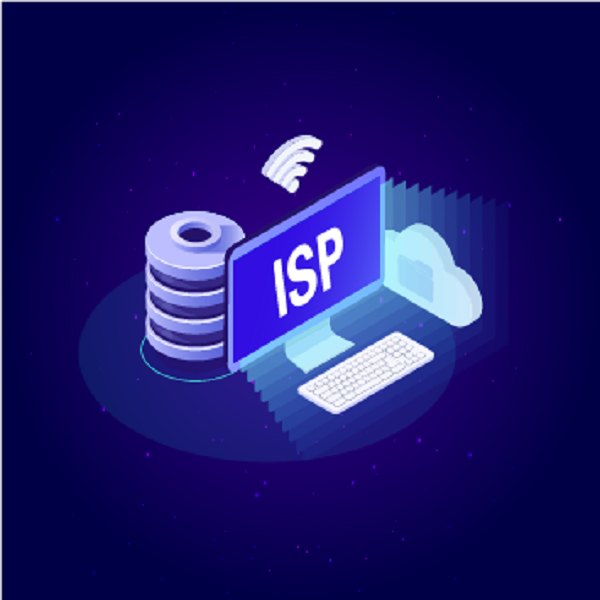Residential Proxies
Allowlisted 200M+ IPs from real ISP. Managed/obtained proxies via dashboard.

Proxies
Residential Proxies
Allowlisted 200M+ IPs from real ISP. Managed/obtained proxies via dashboard.
Residential (Socks5) Proxies
Over 200 million real IPs in 190+ locations,
Unlimited Residential Proxies
Use stable, fast, and furious 700K+ datacenter IPs worldwide.
Static Residential proxies
Long-lasting dedicated proxy, non-rotating residential proxy
Dedicated Datacenter Proxies
Use stable, fast, and furious 700K+ datacenter IPs worldwide.

Web Unblocker
View content as a real user with the help of ABC proxy's dynamic fingerprinting technology.
Proxies
API
Proxy list is generated through an API link and applied to compatible programs after whitelist IP authorization
User+Pass Auth
Create credential freely and use rotating proxies on any device or software without allowlisting IP
Proxy Manager
Manage all proxies using APM interface

Proxies
Residential Proxies
Allowlisted 200M+ IPs from real ISP. Managed/obtained proxies via dashboard.
Starts from
$0.77/ GB
Residential (Socks5) Proxies
Over 200 million real IPs in 190+ locations,
Starts from
$0.045/ IP
Unlimited Residential Proxies
Use stable, fast, and furious 700K+ datacenter IPs worldwide.
Starts from
$79/ Day
Rotating ISP Proxies
ABCProxy's Rotating ISP Proxies guarantee long session time.
Starts from
$0.77/ GB
Static Residential proxies
Long-lasting dedicated proxy, non-rotating residential proxy
Starts from
$5/MONTH
Dedicated Datacenter Proxies
Use stable, fast, and furious 700K+ datacenter IPs worldwide.
Starts from
$4.5/MONTH
Knowledge Base
English
繁體中文
Русский
Indonesia
Português
Español
بالعربية


This article deeply explores the technical principles and implementation solutions of Proxy Site Unblocker, analyzes the core role of proxy IP in breaking through geographical restrictions and ensuring access freedom, and provides a practical guide.
Definition and technical goals of Proxy Site Unblocker
Proxy Site Unblocker refers to a technical tool that bypasses network firewalls or geographical restrictions by forwarding user requests through a proxy server. Its core value lies in:
Break through geo-blocking: Access restricted global websites (such as regionalized content platforms such as Netflix, BBC, etc.).
Avoid corporate/school network controls: Unblock blocked sites such as social media and streaming media.
Enhanced privacy protection: hide the user's real IP and access track to prevent network monitoring.
abcproxy's residential proxies and static ISP proxies are the preferred infrastructure for building an efficient Proxy Site Unblocker due to their high anonymity and stability.
Proxy Site Unblocker's core technical process
Agency Agreement and Tool Selection
Protocol adaptation:
SOCKS5 proxy: supports UDP/TCP traffic and is suitable for P2P downloads, real-time communications, and other scenarios.
HTTP(S) proxy: directly integrated into the browser, can be quickly configured via plugins such as SwitchyOmega.
SSH tunnel: forwards traffic through an encrypted channel, suitable for technical developers.
Tool solution:
Browser extensions (such as Hola VPN, Psiphon) provide one-click unblocking, but there are data privacy risks.
Self-built proxy servers (such as Shadowsocks, V2Ray) need to be combined with abcproxy's proxy IP resources to achieve higher controllability.
Network blocking bypass technology
IP masquerading:
Use residential proxy IP to simulate real user geographic location (such as accessing Hulu through abcproxy's US residential IP).
Dynamic IP rotation strategy (such as changing IP every 5 minutes) to avoid block list detection.
Traffic obfuscation:
TLS/SSL encryption: Disguise proxy traffic as HTTPS communication to bypass deep packet inspection (DPI).
WebSocket protocol encapsulation: For example, V2Ray's VMess protocol is transmitted through WebSocket to avoid enterprise firewall recognition.
Performance optimization strategy
Node geographical location optimization:
When visiting European and American websites, choose nearby servers (such as Frankfurt, Germany, and New York, USA) to reduce latency.
Use CDN technology (such as Cloudflare) to speed up proxy links.
Intelligent routing algorithm:
Automatically switch the optimal proxy node according to the real-time network status (packet loss rate, delay).
Combined with BGP Anycast technology to achieve multi-path redundant transmission.
Typical application scenarios of Proxy Site Unblocker
Global streaming access
Case: Unlock AbemaTV's regionally restricted content through abcproxy's Japanese residential proxy, and solve the region detection problem with DNS unblocking services (such as SmartDNS).
Technical points: It is necessary to maintain the consistency of IP and DNS geographic information to avoid triggering platform risk control.
Academic resource acquisition
Case: Researchers use university proxies to access restricted academic databases such as JSTOR and Sci-Hub.
Technical points: Configure PAC rules to enable the proxy only for the target academic site, and connect other traffic directly to save resources.
Cross-border collaboration
Case: Multinational companies use static ISP proxies to uniformly access overseas ERP systems (such as Salesforce) to ensure business continuity.
Technical points: Set up whitelist IP and two-factor authentication (2FA) to balance access convenience and security.
Current technical challenges and solutions
Challenge 1: Advanced firewall detection (such as GFW)
Detection methods: TCP protocol fingerprint recognition, TLS SNI field monitoring, and traffic behavior analysis.
Solution:
Protocol layer confrontation: Use Shadowsocks' AEAD encryption or Trojan protocol to obfuscate traffic characteristics.
Distributed proxy pool: Dynamically allocate IPs through abcproxy's unlimited residential proxies to reduce the risk of single node exposure.
Challenge 2: Anti-proxy technology for streaming platforms
Detection mechanism: blacklist IP library, browser fingerprint verification (such as WebRTC leak detection).
Solution:
Browser isolation: Use a headless browser (Puppeteer-extra) to automatically clear Cookies and LocalStorage.
WebRTC blocking: Disable WebRTC functionality via a browser plugin such as WebRTC Leak Prevent.
Challenge 3: Mobile compatibility issues
Typical problems: Android/iOS system proxy configuration is complex, and some apps force direct connection.
Solution:
VPN mode integration: Convert the proxy to a system-wide VPN (like using the Outline client).
Application-based proxy: Use tools such as Surfboard to configure proxy rules for specific apps (such as Twitter).
Conclusion
The technical implementation of Proxy Site Unblocker requires comprehensive consideration of protocol adaptation, anti-detection capabilities and performance optimization. Its effectiveness is highly dependent on the reliability of proxy IP resources and the refinement of strategy design. As a professional proxy IP service provider, abcproxy provides a variety of high-quality proxy IP products, including residential proxies, data center proxies, static ISP proxies, Socks5 proxies, and unlimited residential proxies, which are suitable for a variety of application scenarios. If you are looking for a reliable proxy IP service, please visit the abcproxy official website for more details.
Featured Posts
Popular Products
Residential Proxies
Allowlisted 200M+ IPs from real ISP. Managed/obtained proxies via dashboard.
Residential (Socks5) Proxies
Over 200 million real IPs in 190+ locations,
Unlimited Residential Proxies
Use stable, fast, and furious 700K+ datacenter IPs worldwide.
Rotating ISP Proxies
ABCProxy's Rotating ISP Proxies guarantee long session time.
Residential (Socks5) Proxies
Long-lasting dedicated proxy, non-rotating residential proxy
Dedicated Datacenter Proxies
Use stable, fast, and furious 700K+ datacenter IPs worldwide.
Web Unblocker
View content as a real user with the help of ABC proxy's dynamic fingerprinting technology.
Related articles

How does the ChatGPT RAG example improve information processing capabilities
Analyze the actual application scenarios of ChatGPT combined with Retrieval Augmented Generation (RAG) technology, explore its value in knowledge integration and data acquisition, and understand how abcproxy provides underlying support for the RAG system.

How does Best Socks5 Proxy ensure anonymous network needs
This article explores the core value of Socks5 proxy in anonymous networks and analyzes how abcproxy high anonymous proxy meets diverse security needs.

How to remove website access restrictions
This article analyzes the technical principles and mainstream solutions of website access restrictions, and explores the core role of proxy IP in bypassing regional blocking and anti-crawling mechanisms. abcproxy provides multiple types of proxy IP services to help you break through network restrictions efficiently.